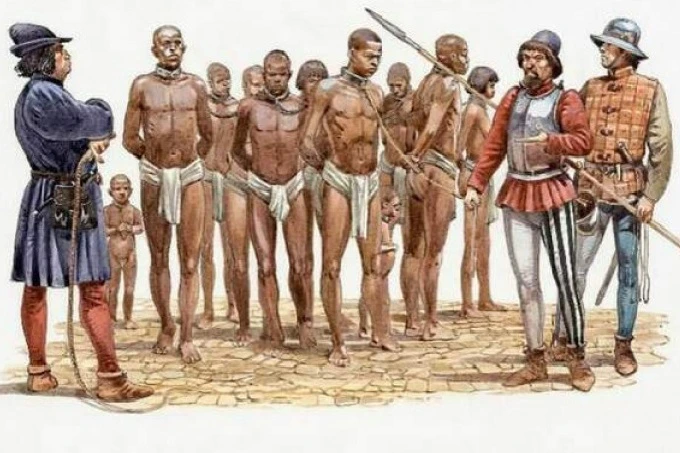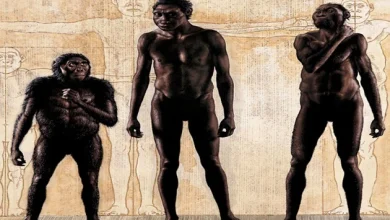How were slaves captured in Africa?

The majority of Africans were bought through local African or African-European merchants rather than being seized or captured by European traders during raids along the coast. These dealers operated a complex network of trade alliances that brought together groups of individuals for the purpose of selling them.
When European merchants went to Africa to enslave people, they utilized the same tactics that Africans used against their own people: Kidnapping, war, raids, fighting, and trade. The majority of Africans who were enslaved were caught in conflicts or abducted, however, others were sold into slavery as a form of debt repayment or punishment.
How slaves were captured
War method
Putting African countries against one another was a method through which Europeans exploited them. While one African country was at war with another, Europeans would take advantage of the situation to invade communities and kidnap Africans to sell as slaves.
The Europeans also took in the prisoners of war who had been seized by either side of the warring African countries throughout the course of the conflict. When these countries were at war with one another, they were rendered unable to defend themselves against European slave traders. Europeans took advantage of the turmoil of war to destabilize the political structures of African countries.
Kidnapping method
Many African slaves were abducted by force or kidnapped, even while the people of that country were not engaged in a war of national defense.
For example, a European may choose a community that seemed to be especially weak or lacking in numbers and compel the whole people of that village to surrender by using weapons to accomplish his goal.
Europeans, armed with cutting-edge weapon technology, were well aware that the majority of tiny African communities and tribes were vulnerable to abduction and other forms of exploitation.
By Trading
African countries with more wealth would trade with European merchants. Among other things, Europeans would provide wealthy African chiefs firearms, tobacco, whiskey, fabrics, and beads in return for the slaves they had taken from them.
In return for precious commodities that couldn’t be obtained in Africa, those enslaved as a result of debt, crime, or other penal behaviors were sold to Europeans.
The prisoners were marched to the shore, where they were tied together and forced to endure lengthy trips that may last weeks or even months. They were imprisoned in enormous stone forts erected by European commercial firms along the coast or in smaller wooden complexes inland.
Ships carrying slaves came from Europe with a cargo of commercial goods on board. Captains sent gifts to local African officials and paid taxes to the government in exchange for the privilege to trade. They then went into the serious business of bartering and exchanging products, providing a diverse range of items such as textiles, guns, wine, beads, manillas, and cowries, among other things.
Africa before the introduction of European enslavement
Long before the arrival of European slavers, the peoples of West Africa had a long and diverse history and culture that was rich and diversified. In terms of governmental structures, they had a diverse range of options, including kingdom, city-state, and other organizations, each with its own language and culture.
Empires like Songhai, Mali, and Benin, as well as the kingdoms of Kongo and Benin city, were huge and strong, with rulers at the helm of intricate political organizations that governed hundreds of thousands of citizens.
The political structures in other parts of the world were smaller and weaker, dependent on the agreement between individuals at the village level. As was the case in war-torn Europe in the sixteenth century, the balance of power between political powers and organizations changed on a regular basis.
Art, learning, and technology thrived throughout this period, with Africans demonstrating particular proficiency in fields like medicine, arithmetic, and astronomy. In addition to household products, they produced excellent luxury objects in bronze, ivory, gold, and terracotta for both home use and commerce in a variety of materials.
For centuries Africans dealt with Europeans via merchants in North Africa, who in turn traded with Europeans. In the 15th century, the Portuguese were the first merchants to sail along the coast of West Africa, and they were followed by others. Later, the Dutch, the British, the French, and the Scandinavians joined the fray. They were mostly interested in costly objects like gold, ivory, and spices, notably pepper, but they were also interested in other things.
European merchants abducted and purchased Africans for sale in Europe from the very beginning of their interactions with them. However, it was not until the 17th century, when plantation owners sought ever-increasing numbers of slaves to meet the growing demand for sugar in Europe, that transatlantic slavery emerged as the primary trading mode.
Slavery hurt Africa
Europeans contributed to the spread of violence and political instability in mostly West Africa by including weapons among their trading commodities. The upshot was that certain states, like Ashanti and Dahomey, became strong and prosperous. The populations of other states were devastated as a result of being absorbed by competitors, resulting in their total destruction.
Millions of Africans were displaced from their homes, and cities and villages were depopulated as a result of the genocide. Many Africans died in slaving wars or remained slaves in Africa as a result of these conflicts.
Many countries, notably Angola under Queen Nzinga Nbande and Kongo, were adamant in their opposition to slavery. The interests of those participating in the trade, on the other hand, proved to be too powerful to overcome.
Men constituted around two-thirds of the persons sold to European dealers. Women were sold in fewer numbers in Africa because their abilities as farmers and craftspeople were very vital in African society. These ladies were left with the responsibility of restoring their violated communities.
‘I am certain that the vast majority of battles in Africa would be avoided if Europeans would refrain from luring them into conflict with offers of products for sale. I suppose that the prisoners who have been prepared for sale are fewer in number than the murdered,’ according to John Newton, a former captain of an enslaver ship.
In addition, people in West Africa have suffered greatly, and they continue to be at a significant disadvantage as compared to those who encouraged the trade in their stead. In order to get recognition for the atrocities perpetrated during slavery, the Reparations Movement was founded. A financial recompense for Africans and people of African heritage living in diaspora is also being sought by the movement from Europe and the United States, according to the movement.




